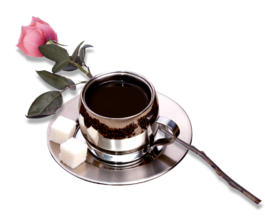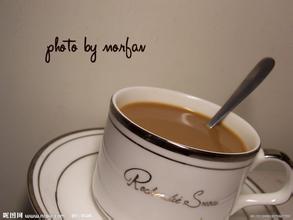Introduction to the characteristics of Coffee Flavor and taste in Manor San Pedro, Jamaica
But in 1948, the quality of the coffee had declined and Canadian buyers refused to renew the contract, so the Jamaica government set up the Coffee Industry Council to save the fate of premium coffee. By 1969, the situation had improved, as Japanese loans had improved the quality of production and thus secured the market. Even in 1969, Japanese coffee drinkers were willing to pay a deposit for the coffee, but today it has reached the point of being a cult favorite.
By 1981, some 1500 hectares of land in Jamaica had been cleared for coffee, followed by investment in another 6000 hectares. In fact, today's Blue Mountain region is a small area of only 6000 hectares, and it is impossible for all the coffee labeled "Blue Mountain" to be grown there. An additional 12000 hectares are devoted to growing two other types of coffee (non-Blue Mountain coffee): High Mountain Supreme and Jamaica Prime Washed Jamaican.
True Blue Mountain Coffee is one of the world's best grown coffees, and Jamaica's weather, site structure and terrain combine to provide an ideal location. The ridge across Jamaica extends to the east of the island, and the Blue Mountains rise to more than 2100 meters. Cool, foggy, and rainy, this fertile land is tempered by rain, and coffee is grown in mixed cultivation alongside banana and pear trees on terraces.
Small plantations such as Wallenford Estates, Silver Mountain Estates and Martinez's Atlanta Estates also grow Blue Mountain Coffee on a small scale, many owned by small landowners whose families have worked the land for two centuries. The coffee industry in Jamaica faces a number of problems such as cyclone impact, increased labour costs and difficulty in mechanising terraces. Many small estates and farms are difficult to rationalize.
Blue Mountain Coffee, however, is one of those coffee retailers that value credibility and want to stock some coffee anyway. A leading British retailer says he will continue to sell Blue Mountain coffee year-round regardless of price because he has customers who believe only in Blue Mountain coffee. The real Blue Mountain coffee is one of the best grown coffees in the world, and Jamaica's weather, geology and terrain combine to provide an ideal location. The ridge across Jamaica extends to the east of the island, and the Blue Mountains rise to more than 2100 meters. Cool, foggy weather and frequent rainfall have tempered this fertile land with rain. Here coffee trees are grown in mixed cropping, alongside banana and avocado trees on terraces.
Blue Mountain coffee is also grown on small estates such as Wallenford Estate, Silver Hill Estate, and J. Martinez's Atlanta Estate. Even the largest planters in the region are small-scale farmers by international standards, many of whom are smallholders whose families have worked the land for two centuries. The coffee industry in Jamaica faces a number of problems, such as the effects of hurricanes, increased labour costs and difficulties in mechanising terraces. Many small estates and farms are difficult to rationalize.
Blue Mountain Coffee, however, is one of those coffee retailers that value credibility and want to stock some coffee anyway. A leading British retailer says he will continue to sell Blue Mountain coffee all year round regardless of price because he has many customers who only recognize Blue Mountain.
Today, 90% of post-harvest Blue Mountain coffee is purchased by Japanese. In 1992, Jamaica sold 688 tons of Blue Mountain coffee to Japan, 75 tons to the United States and 59 tons to Britain. Blue Mountain coffee is now in short supply, regardless of price, because the rest of the world can only get 10 percent of its production. For many years Langford Brothers was the sole supplier in Britain. The Edmonds Group was later supplied by Salda Foods of Jamaica.
Langford Brothers is a licensed Jamaica Blue Mountain coffee brand
Blue Mountain coffee differs from other coffees in transportation in that it is transported in 70 kg barrels, which are copies of Bonifieur barrels produced in Guadeloupe last century. These barrels were originally used to carry flour from England to Jamaica, usually bearing the brand name and manufacturer's name. The Coffee Industry Council issues a certificate for all pure Jamaica coffee and stamps it before export.
The government of Jamaica used to insist that all Blue Mountain coffee was roasted in Jamaica to ensure quality. In fact, baking is a fine art, and doing it well requires experience, training, and expensive equipment. From the consumer's perspective, coffee beans should be available and consumed immediately after roasting. Coffee roasted in Jamaica is unlikely to meet this requirement. Jamaica's green coffee beans are now ready for export.

Important Notice :
前街咖啡 FrontStreet Coffee has moved to new addredd:
FrontStreet Coffee Address: 315,Donghua East Road,GuangZhou
Tel:020 38364473
- Prev

Introduction of Coffee Flavor and Taste varieties in Hassanda Coffee Garden, Ecuador
As coffee is consumed by people all over the world, the world coffee industry is also moving towards mass production, while St. Cristobal, a small and unreliable coffee industry, is in trouble and is likely to be forced to give up without profit. It wasn't until the early 1990s that the Gonzalez family bought Hasunda Coffee Park. Humboldt current (HumboldtC
- Next

Introduction to the fragrant and smooth coffee flavor of Manor Atlanta, Jamaica
Since the late 16th century, Jamaica has been repeatedly attacked by pirates from France, England, the Netherlands and other countries. In May 1655, a British fleet led by William Bing and Robert Venabus occupied Jamaica. They immediately invited pirates to the island's port of Loire to help defend the Spaniards from possible counterattacks. Between 1657 and 1658, the Spaniards
Related
- Does Rose Summer choose Blue, Green or Red? Detailed explanation of Rose Summer Coffee plots and Classification in Panamanian Jade Manor
- What is the difference between the origin, producing area, processing plant, cooperative and manor of coffee beans?
- How fine does the espresso powder fit? how to grind the espresso?
- Sca coffee roasting degree color card coffee roasting degree 8 roasting color values what do you mean?
- The practice of lattes: how to make lattes at home
- Introduction to Indonesian Fine Coffee beans-- Java Coffee producing area of Indonesian Arabica Coffee
- How much will the flavor of light and medium roasted rose summer be expressed? What baking level is rose summer suitable for?
- Introduction to the characteristics of washing, sun-drying or wet-planing coffee commonly used in Mantenin, Indonesia
- Price characteristics of Arabica Coffee Bean Starbucks introduction to Manning Coffee Bean Taste producing area Variety Manor
- What is the authentic Yega flavor? What are the flavor characteristics of the really excellent Yejasuffi coffee beans?

